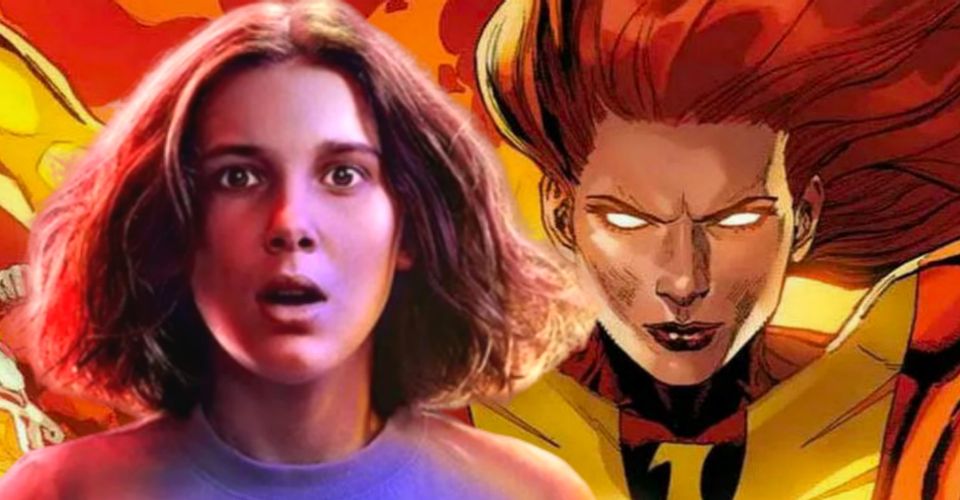Stranger Things Is Retelling X-Men: Dark Phoenix – Here’s How

Stranger Things is retelling the X-Men’s most famous story, the Dark Phoenix Saga. Writers are currently working on the script for the next season of Stranger Things, and they’ve recently confirmed that Chapter 1 is entitled “The Hellfire Club.” The show has always been well-known for its pop culture references, and this is one that’s delighted comic book readers; it’s a reference to some classic X-Men villains.
It’s not the first time Stranger Things has referenced the X-Men, of course. The very first chapter saw Will and Dustin race for a copy of Uncanny X-Men #134, and in Chapter Three Dustin suggested that Eleven could be a mutant, like the X-Men. Moving into season 3, Hawkins Mall felt like a reference to the stories that introduced Jubilee, while Dustin called his radio transmitter “Cerebro” after the device that allows Charles Xavier to communicate psychically over vast distances.
The Duffer brothers are clearly X-Men fans, but Marvel’s merry mutants have had a far greater impact than most viewers would realize at a glance. That mention of Uncanny X-Men #134 is key, because in the comics it’s the beginning of the classic Dark Phoenix Saga. And on closer inspection, that story has had a massive impact on Stranger Things.
Eleven Is A Jean Grey Analogue

Eleven is best understood as the Duffer brothers’ version of Jean Grey. One of the original X-Men in the comics, Jean was created by Stan Lee and Jack Kirby back in 1963. Lee wasn’t particularly interested in the character, and gave her a powerset that he considered quite basic for mutants; telepathy and telekinesis. In spite of Lee’s disinterest, Jean became one of the most popular X-Men characters, especially when legendary X-Men writer Chris Claremont took charge in the 1970s. He made Jean one of his most important characters, powering her up with the Phoenix Force in order to give the X-Men a heavy hitter on a cosmic stage, and she’s been one of the core X-Men ever since.
Eleven’s powers are similar to Jean’s, oriented mostly around telepathy and telekinesis, while her ability to remote-sense people is visually similar to some comics where Jean has accessed the Astral Plane. Stranger Things season 1, chapter 8 included a scene in which Eleven pinned the Demogorgon to the wall, similar to a clash with Mastermind in the Dark Phoenix Saga. And, of course, Eleven’s real first name is “Jane” – deliberately similar to “Jean.”
The Dark Phoenix Saga Is At The Heart Of Eleven’s Story

The Jean Grey comparison becomes even more explicit in Stranger Things season 2, which has overt references to one of Jean’s most famous stories – The Dark Phoenix Saga. In the comics, Jean had been “possessed” by a cosmic force of death and rebirth called the Phoenix, granted godlike power on a level the X-Men had never seen before. Unfortunately, she found herself manipulated by a psychic named Mastermind, who possessed the power to cast convincing illusions. He tricked Jean into betraying the X-Men, and she became the Black Queen, one of the leaders of a villainous group known as the Hellfire Club. In the end, the Phoenix’s power was too great, and Jean broke free from Mastermind’s control. It turned out the Phoenix had been corrupted by the experience, and Jean became Dark Phoenix, exacting revenge upon Mastermind and consuming an entire star-system in her rage. In the end, Jean chose to commit suicide rather than risk another Dark Phoenix rampage.
While Stranger Things season 2 avoids the classic Dark Phoenix trope, it has a lot of clear parallels. In the show’s most controversial episode, “The Lost Sister,” Eleven wound up working with another of her Papa’s test subjects. Like Mastermind, Kali possessed the ability to cast convincing illusions, and she persuaded Eleven to adopt a dark, punk rock look. In Chapter 9, a more confident Eleven confronted the Mind Flayer as it attempted to break through from the Upside-Down. Her telekinetic shield and levitation are classic Jean Grey powers, and the associated energy surges were visually similar to the Phoenix raptor from the comics.
There aren’t as many Dark Phoenix parallels in Stranger Things season 3, but the ending – with Eleven losing her powers – is quite interesting. Writer Chris Claremont originally intended the “Dark Phoenix Saga” to end with Jean losing her powers as penance for the crimes she had committed as Dark Phoenix. Editor Jim Shooter disagreed, believing that wasn’t enough, and instead the story ended with Jean sacrificing herself.
Other X-Men Stories Influence Stranger Things As Well

While there are clear similarities between Kali and Mastermind, the relationship between Kali and Eleven is influenced by other X-Men arcs as well. It’s particularly reminiscent of the Xavier-Magneto dynamic, with Eleven seeking coexistence while Kali pursues a “mutant and proud” philosophy. Kali’s vendetta against the people who experimented upon her is reminiscent of one of Magneto’s most important arcs during the Claremont era; Claremont reinvented Magneto as a Jewish mutant who had suffered the Holocaust, and was seeking vengeance against those who had persecuted him. Magneto was taken on a journey from lawless avengers to troubled elder in the mutant community, paralleling Menachem Begin, a right-wing Israeli leader who ran cells during the 1930s and 1940s but became known for negotiating a cold peace with Egypt at Camp David in 1979.
And this isn’t the only parallel, either. Conceptually, Kali is similar to the character of Callisto, leader of a group of subterranean mutant outlaws known as the Morlocks – who tended to dress in punk style. In one arc, Storm wound up dueling with Callisto for leadership of the Morlocks. Afterwards, she too settled into a new punk incarnation, complete with a mohawk. Kali’s leadership role among her band seems to be loosely inspired by the Morlocks, as does their lawless nature.
What Does This Mean For Stranger Things Season 4?

Given the first episode of season 4 is called “The Hellfire Club,” it’s safe to say that Stranger Things is going to continue riffing on the Dark Phoenix Saga. It’s difficult to predict what form this will take, but one prominent possibility is that the show will see Eleven suffer some form of psychological trauma as a result of her experiences with the Upside-Down. Claremont originally envisioned Phoenix as what he called a “schizoid entity” of Jean Grey, rather than a separate being in its own right, as it was later retconned.
There is one subtle piece of supporting evidence for this notion. In the original script for the first episode, Will and Dustin didn’t mention Uncanny X-Men #134; they talked about Uncanny X-Men #269. This is a particularly interesting reference, given it’s completely anachronous; the issue wasn’t released until 1990, so wouldn’t have been a good fit for a show set in the 1980s. The issue stars a different X-Man, Rogue, a young woman who has the power to absorb a person’s memories and powers through skin contact. It sees Rogue battling with a personality she has absorbed, Carol Danvers, which has essentially become a schizoid entity within her own psyche. In thematic terms, there are clear similarities between Uncanny X-Men #269 and the Dark Phoenix Saga, which may explain why the Duffer brothers initially tossed that reference in – but then dropped it.
One thing’s for sure, though; that episode title is a major hint to X-Men readers that there’ll be a lot more Easter eggs and Dark Phoenix references in Stranger Things season 4. Hopefully it won’t be long before Netflix confirm the release date for what’s sure to be one of the major TV events of 2020 or 2021.
- Fantastic Beasts: The Secrets of Dumbledore (2022)Release date: Apr 15, 2022
About The Author


















